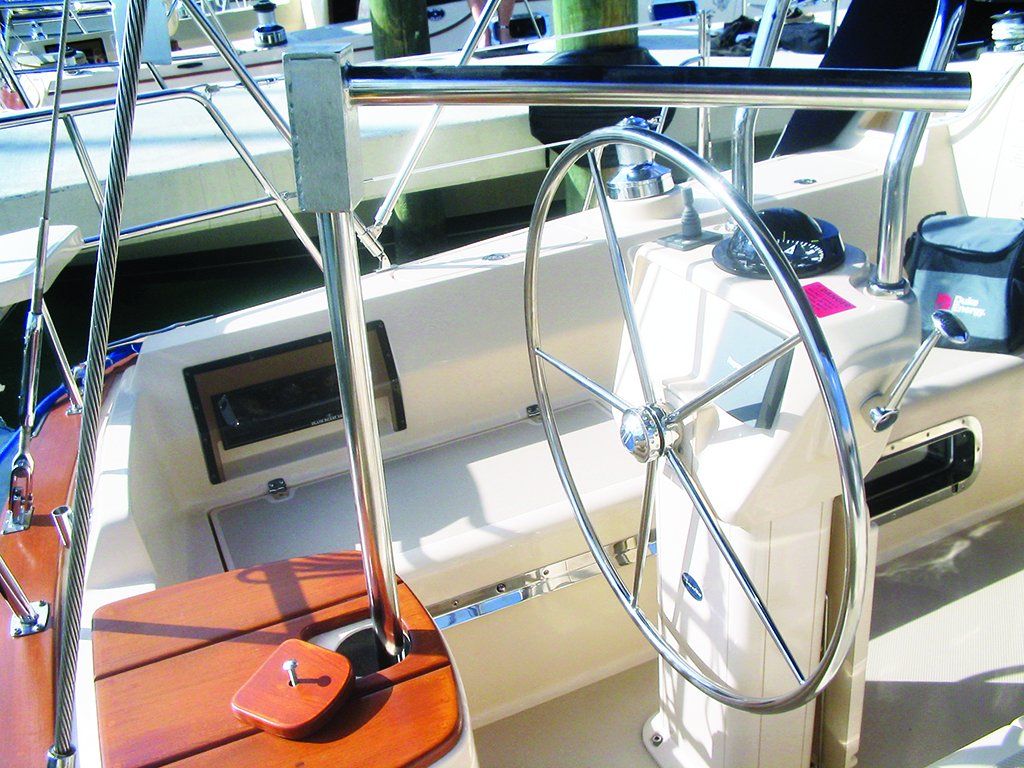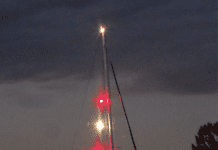A decade ago, Practical Sailor editors began scouring boat shows for the perfect emergency tiller and an ideal stowage system for it. Little more than a simple lever arm that attaches to the head of the rudder stock, the emergency tiller is the device a sailor relies on in the event a steering cable parts or theres some other steering system failure. Our seemingly simple search turned out to be a nearly fruitless enterprise. Boat after boat fell far short of delivering even an average emergency tiller. Heres a look at our favorites and favorite offenders as well as our criteria for a good emergency tiller and where to keep it.
****

Ten years ago, Practical Sailors editors scoured the seasonal boat shows for well-designed emergency tillers. Little more than a simple lever arm that attaches to the head of the rudder stock, these are the devices a sailor relies on when his steering fails-typically when a cable parts. Lloyds of London requires an emergency tiller for certification as do most offshore races. That seemingly simple search turned out to be a nearly fruitless enterprise. Boat after boat fell far short of delivering even an average emergency tiller.
Now, a decade since that study was carried out, it seems as though little has changed. More reliable (but not invulnerable) direct-linkage steering systems are more common, but plenty of new boats still rely on cable-and-sheave steering wheel systems. And there is no shortage of sad, ill-conceived, malformed emergency tillers.
Some of our favorites, and favorite offenders are highlighted on these pages. With luck it, wont take another 10 years for builders to catch on.
Here, for the record, are Practical Sailors criteria for a good emergency tiller. If you have one on your boat, now is the time to pull it out and see how it compares. If you simply don’t have one, like the Manta 42 catamaran we checked at the Miami Boat Show earlier this year, its a good time to get one.
Easy to Locate. The tiller should be located where it can be grabbed in a few seconds, even in complete darkness. Installation should require no special tools, but if it does, then the tools should also be easy to find, ideally stored with the tiller.
Easy to Install. The top of the rudder stock should be quickly accessible. Access should not require special tools or require deck openings vulnerable to downflooding. Installation should be easily understood and quickly
accomplished by anyone.
Simple Design. The tiller should be non-magnetic, ideally of one-part construction. Metal tube sections should offer adequate strength and leverage to withstand worst-case steering loads. The tiller should positively engage with the top of the rudder stock so it wont pull out or fall off. If lines and blocks are required to compensate for lack of leverage, this gear should be stored with the tiller. The tiller should be adaptable to windvane steering or a simple tillerpilot.
Operability. The design should allow good visibility from the helm, and allow full movement of the rudder with little or no modification to the boat and its instruments.
Comfort. The tiller should let the helmsman steer in a comfortable position. Small diameter tubes are undesirable. Over time, tissue compression of more than 30 pounds-force on the tiller hand can lead to undue fatigue. A pair of gloves (stowed with the tiller) will help reduce pressure on the drivers hands.
Durability. A good emergency tiller should require little or no maintenance and last the lifetime of the boat.









































